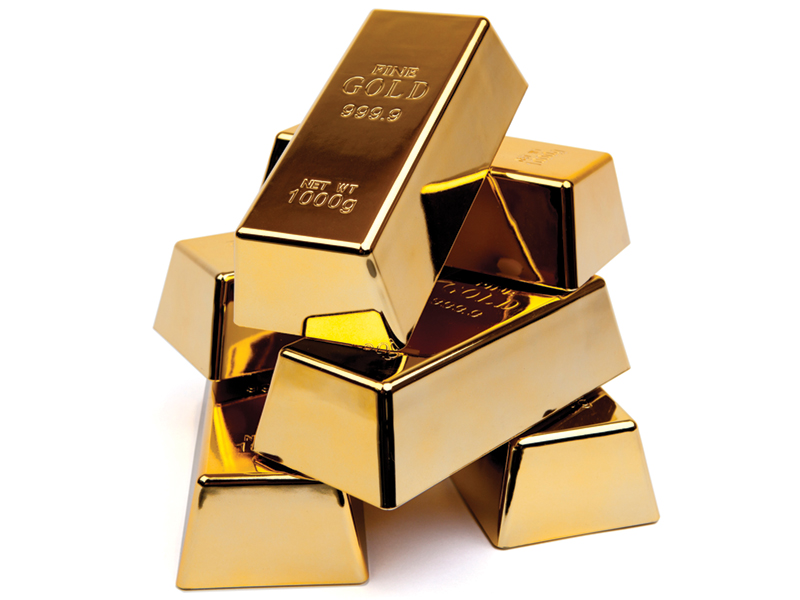
At the beginning of 2020, the OPSEU Pension Trust upped its gold allocation to close to six per cent of its total fund after a comprehensive portfolio assessment.
The decision paid off. In an environment of historically low interest rates and coronavirus-related market uncertainty, the commodity’s price skyrocketed to reach an all-time high of US$2,000 an ounce in mid-2020 and netted the pension fund a return north of 25 per cent that year.
“It turned out to be a very good timing decision because gold did extremely well during the COVID environment,” says Kevin Zhu, the OPTrust’s managing director of portfolio construction. The precious metal is one of the assets in the pension fund’s risk mitigation portfolio, which is primarily focused on addressing equity market risk.
Read: Institutional investors taking closer look at Bitcoin, gold amid inflation fears
The first pandemic year is perhaps the best illustration of the value of gold in an investment portfolio. The precious metal is seen as one of the oldest stores of value and a safe haven asset for times of market turbulence, as it tends to have an inverse relationship to public equities. It also often performs well in times of quantitative easing and ultra-low rates. When bonds no longer provide the same return and downside protection, the argument against gold — as an asset that produces no income — starts to weaken.
“When people are feeling uncertain, there are fears of . . . really big change in the marketplace or a really different environment emerging, gold acts as a safe haven for portfolios when markets correct,” says Colin Ripsman, president and founder of Elegant Investment Solutions Inc.
Gold also adds diversification to a portfolio, he adds, as it has very little correlation to traditional major asset classes and is liquid, which can be beneficial in times of market stress.
Purchase options
Investors can purchase physical gold in ounces or gold bars, but that comes with cumbersome storage requirements and costs, notes Zhu, and makes it difficult to quickly adjust exposure.
The OPTrust invests in the metal through gold futures, which he says frees up the fund’s capital for other strategies and allows it to quickly scale its exposure up or down for risk mitigation purposes. However, he notes, investors in gold futures must be mindful of whether they have enough cash set aside in the event the price of gold changes.
Read: Investors expect gold prices to remain bullish: survey
Institutional investors can also gain exposure by purchasing an exchange-traded fund tied to the price of gold. They could also invest directly in gold mining companies. But the issue there, says Ripsman, is investors may not replicate the performance of the metal — miners have company-specific risks and Toronto Stock Exchange-listed companies have tended to underperform the bullion. Zhu also notes that strategy comes with underlying equity market risk.
By the numbers
• US$2,000 — The all-time high price of gold, reached in mid-2020
• 6% — The OPTrust’s allocation to gold in early 2020
• 25%+ — The OPTrust’s return on gold in 2020
• US$2.7 billion — The net inflows into global gold ETFs in January 2022, according to the World Gold Council
Yusuke Khan, senior investment consultant at Mercer Canada, says pension plan sponsors that hold gold shouldn’t consider it as equivalent to cash in the bank, as its perception as a safe haven obscures the metal’s price volatility. After reaching its all-time high in mid-2020, it quickly lost 10 per cent of its value, settling around US$1,800 an ounce.
While the metal can be an effective hedge in inflationary periods as the increasing cost of living tends to buoy its price, gold may already be starting to lose its shine as real interest rates begin to rise. “If you have an environment where interest rates were to normalize or go higher than what’s being forecasted now, the fact that gold doesn’t pay any interest or dividends is a risk investors should be well aware of,” says Khan.
Read: Is gold really a good hedge for inflation?
The OPTrust recently reassessed its exposure to gold and is paring it down by about one or two per cent. “[We’re not saying] the efficacy of gold is over,” says Zhu. “But gold could be vulnerable or its effectiveness as a tail risk mitigation strategy could diminish in certain markets.”
Kelsey Rolfe is a Toronto-based freelance writer.
